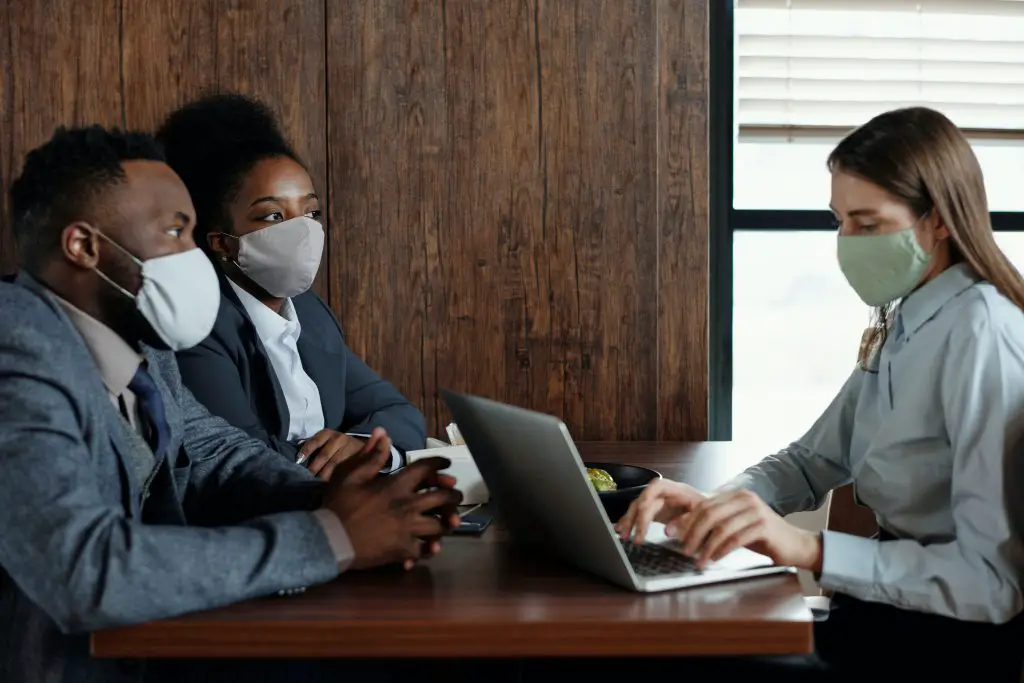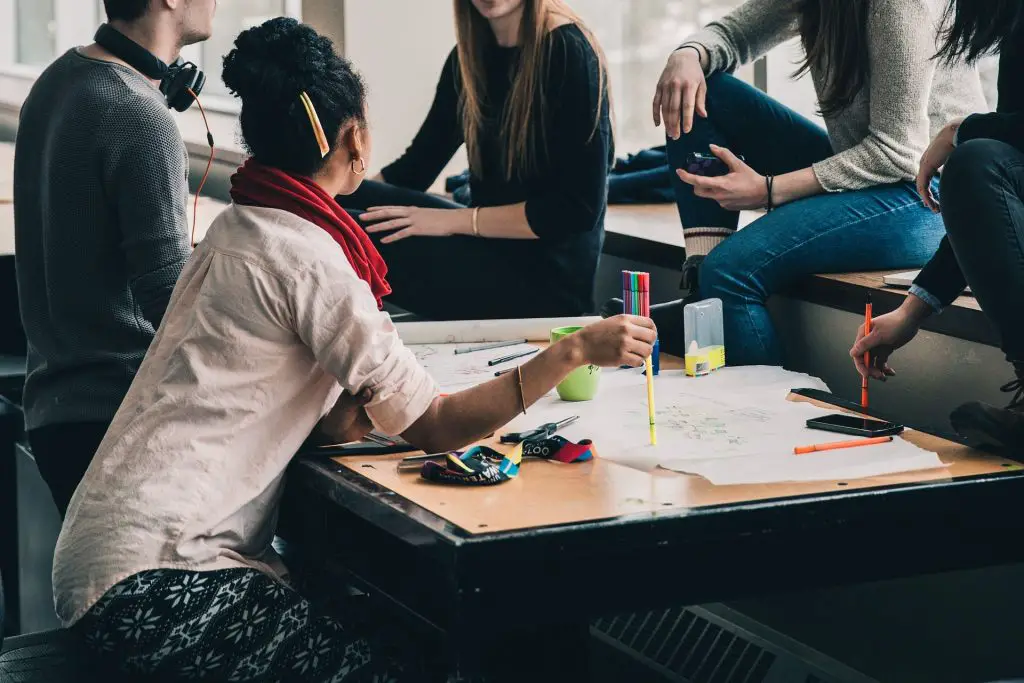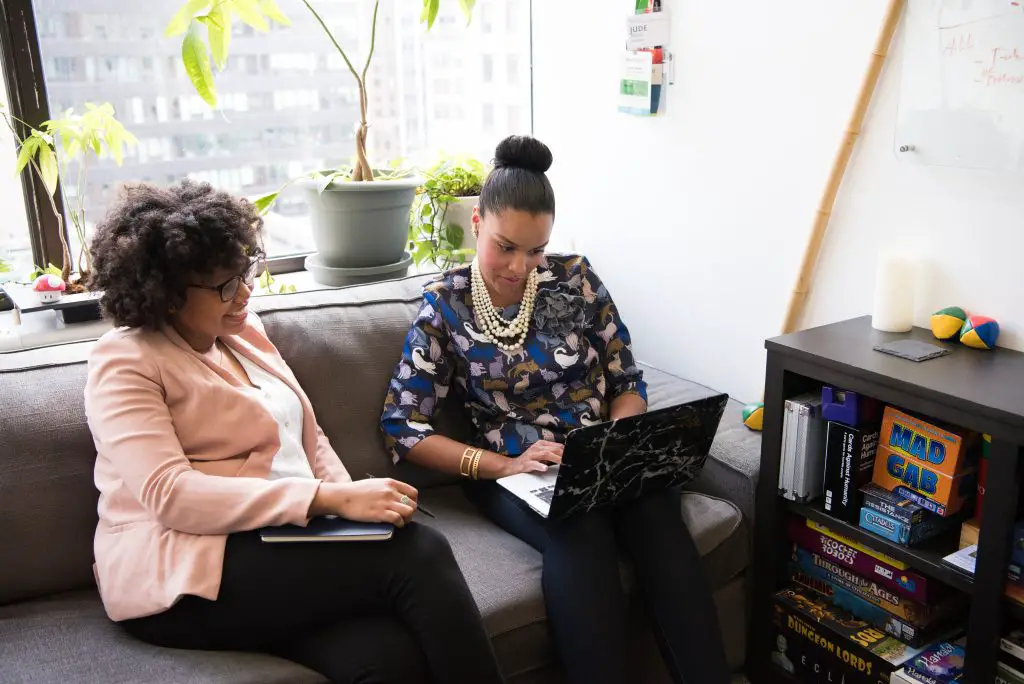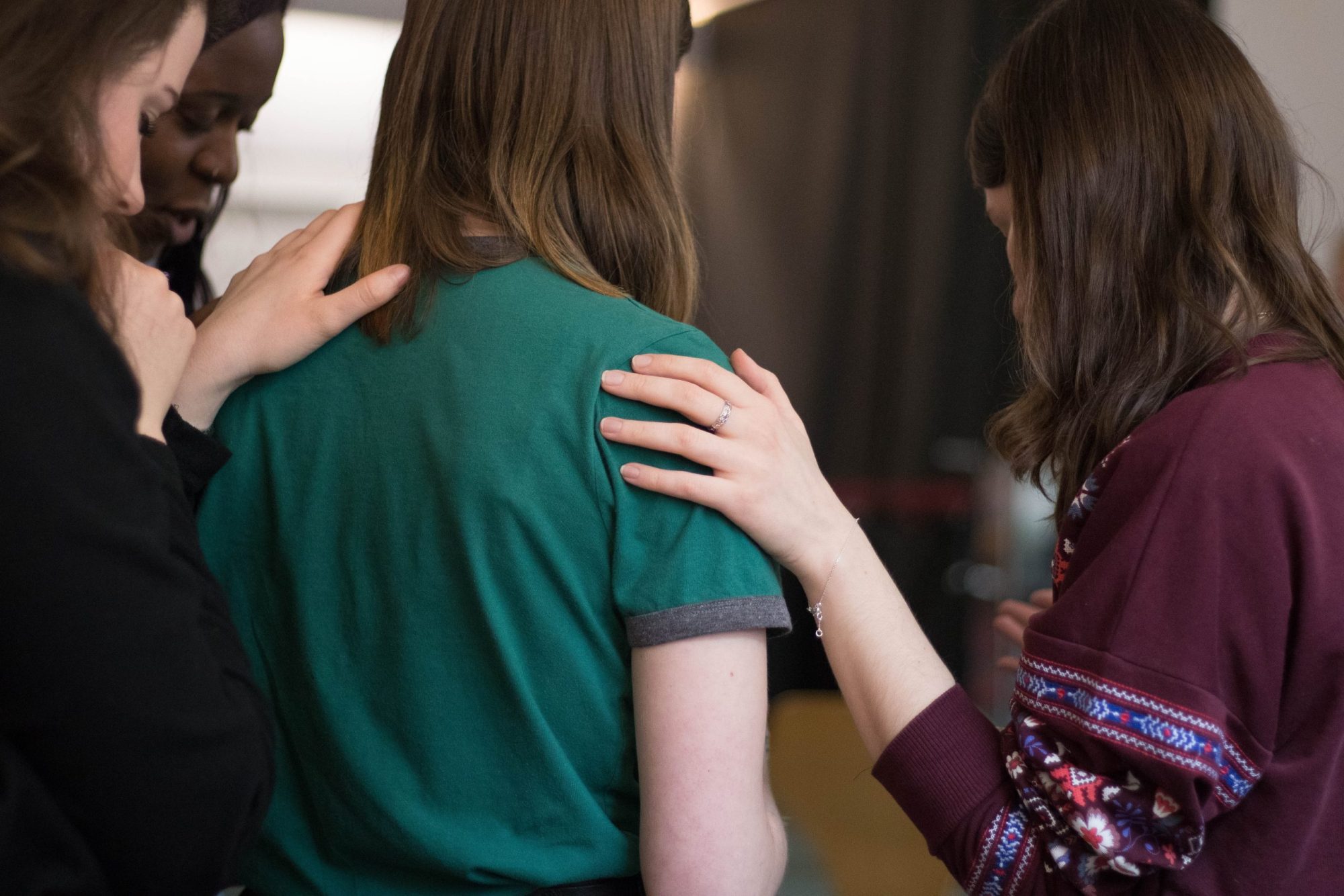Communication is the lifeblood of human interaction, shaping our relationships, work, and understanding of the world around us.
But what makes communication effective, and how can we improve our skills to ensure clear, concise, and engaging exchanges?
In this comprehensive guide, we’ll explore “What are the types and characteristics of communication,” dissect the communication process, and provide practical tips for overcoming barriers and enhancing your verbal, written, and nonverbal skills.
Key Takeaways
- Understand the components of communication, from verbal and written to nonverbal elements.
- Recognize different types of communication, such as formal and informal, direct or indirect. Develop strategies for overcoming personal and systematic barriers to improve understanding between individuals.
- Enhance your skills by practicing active listening, confident speaking, politeness when writing emails, body language awareness, etc.

Understanding the Communication Process
The communication process encompasses a series of components that facilitate the exchange of information and ideas. It includes the sender, message, encoding, media, decoding, recipient, and feedback, which is essential for effective communication.
To enhance understanding, the message may contain visual communication elements, such as images, graphs, or charts. A deeper understanding of the communication process intricacies allows us to optimize our interactions and foster meaningful connections with others.
Characteristics of Effective Communication
For communication to be effective, it must possess specific characteristics. It should be a two-way process where both parties actively participate in sending and receiving messages.
Nonverbal elements, such as body language and facial expressions, convey emotions and enhance the message.
Additionally, communication should be dynamic and continuous, adapting to changing circumstances and contexts.
Two-Way Process
A two-way process involves sending and receiving messages, making communication dynamic and continuous. This approach promotes better understanding and collaboration between parties, as both actively engage in communication, ensuring effective communication flows.
However, maintaining a two-way process can be challenging if one party is not as involved or does not comprehend the message. To overcome these challenges, fostering trust and active participation from all parties is crucial.
Nonverbal Elements
Nonverbal cues, such as body language and facial expressions, play a significant role in communication. They can effectively convey emotions and influence the effectiveness of a message. For example, facial expressions can reveal a person’s character and emotional state.
Awareness of nonverbal cues and their incorporation into our communication allows for more impactful and accurately interpreted messages.
Dynamic and Continuous Process
Communication constantly evolves, requiring adaptability and flexibility from all parties involved. This means being open to new ideas, adjusting our approach to different contexts, and remaining receptive to feedback.
Embracing communication’s dynamic nature allows continuous improvement of our interactions and fosters more productive and meaningful connections.
Types of Communication: Verbal, Written, and Nonverbal
Communication can be categorized into three main types:
- Verbal communication: This includes spoken or written words.
- Written communication: This involves written symbols and letters.
- Nonverbal communication: This includes body language, facial expressions, and gestures.
Nonverbal communication encompasses body language, facial expressions, and tone of voice. Each type of communication serves a distinct purpose, and understanding their unique characteristics is essential for effective communication.
Verbal Communication
Verbal communication, which includes verbal and written communications, involves spoken or written words, making it essential for conveying information and emotions. Some examples of verbal communication include:
- Conversations
- Presentations
- Phone calls
- Meetings
- Interviews
- Speeches
- Public speaking
Storytelling, for example, is an effective form of verbal communication that helps create shared understandings within an organization.
Development of strong verbal communication skills like active listening and clear, confident speech facilitate better understanding and collaboration with others.

Written Communication
Written communication is asynchronous and can be read by multiple people, making it useful for record-keeping and documentation. Examples of written communication include emails, memos, and reports.
Ensuring clarity, conciseness, and accuracy in written communications effectively conveys information and minimizes misunderstandings.
Nonverbal Communication
Nonverbal communication, also known as nonverbal communication, includes body language, facial expressions, and tone of voice, which can convey emotions and affect the effectiveness of a message. For example, a person’s posture can demonstrate interest or detachment.
Mastering nonverbal communication skills enhances our ability to understand others and accurately express our emotions and intentions.
Formal and Informal Communication
Communication can be classified as formal or informal, depending on the context and purpose. Formal communication follows rules and conventions and occurs in professional settings, while informal communication is casual and relationship-building.
Understanding the differences between these types of communication is crucial for navigating various social and professional situations.
Formal Communication
Formal communication refers to various methods used in professional settings, including:
- Business emails
- Memos
- Reports
- Presentations
It follows rules and conventions, occurs in professional settings, and requires adherence to authority lines.
Adherence to formal communication standards ensures that messages are clear, concise, and suitable for the intended audience.
Informal Communication
Informal communication is casual and relationship-building, often through face-to-face discussions and oral language. Examples of informal communication include water cooler chats, office gossip, and discussions about work in a more relaxed setting.
Informal communication fosters a sense of camaraderie and allows for more open expression of thoughts and feelings.
Communication Channels and Styles
Communication can occur through various channels and styles, such as:
- Direct communication
- Indirect communication
- Vertical communication
- Horizontal communication
Each channel and style serves a unique purpose, and understanding their nuances is essential for effective communication.
Direct communication is a direct exchange between two or more people, such as a conversation or a
Direct Communication
Direct communication is clear, concise, and straightforward, making it practical for conveying information. Utilizing a confident voice, practicing active listening, and avoiding filler words ensure our messages are accurately understood.
Direct oral communication is especially useful when discussing important topics or conveying essential information.

Indirect Communication
Indirect communication is more subtle and may involve hints or suggestions, which can help navigate sensitive topics. Understanding the nuances of indirect communication helps avoid misunderstandings and allows for more tactful message delivery.
Preserving politeness and accommodating cultural differences in communication styles is important for successful communication.
Vertical Communication
Vertical communication occurs between different levels of an organization, such as between managers and employees. This type of communication can involve:
- Dissemination of information
- Orders
- Rules
- Mandates from senior management to associates or vice versa.
Comprehending the dynamics of vertical communication helps foster better collaboration and understanding within the organization.
Horizontal Communication
Horizontal communication occurs between individuals at the same level within an organization, promoting collaboration and teamwork.
Communication and collaboration among colleagues create a more positive and productive work environment.
Interpersonal and Group Communication
Communication can occur between individuals (interpersonal) or within groups (group communication). Both types of communication are essential for building relationships, understanding others, and fostering collaboration within various settings.
Interpersonal Communication
Interpersonal communication involves one-on-one interactions and is essential for building relationships and understanding others. Developing effective interpersonal communication skills, like active listening and clear, confident speech, fosters better understanding and collaboration with others.
Group Communication
Group communication involves multiple individuals and requires effective listening, speaking, and collaboration skills. Fostering open communication and collaboration within a group ensures everyone’s ideas and opinions are heard and considered, leading to more effective decision-making and problem-solving.
Overcoming Communication Barriers
Communication barriers can be personal or systematic and must be addressed to ensure effective communication. Understanding and developing strategies to overcome these barriers improves communication skills and fosters better understanding among individuals and within groups.
Personal Barriers
Personal barriers include individual differences, emotions, and perceptions that can hinder communication. Recognizing and addressing personal barriers enhances communication skills and fosters better understanding among individuals.
This may involve developing empathy, practicing active listening, and adjusting our communication style to accommodate the needs of others.
Systematic Barriers
Systematic barriers involve organizational structures, policies, or procedures that can impede communication. Addressing these barriers may involve adjusting organizational structures, improving communication channels, and creating a more open and inclusive work environment.
Addressing systematic barriers facilitates more effective communication within an organization.

Enhancing Communication Skills
Developing verbal, written, and nonverbal communication skills is essential for effective communication. Honing these skills allows us to convey our ideas and emotions more effectively, foster stronger relationships, and easily navigate various social and professional situations.
Good communication skills are invaluable in both our personal and professional lives. They can help us to
Developing Verbal Skills
Enhancing effective verbal communication skills involves using a confident voice, active listening, and avoiding filler words. These techniques ensure our messages are accurately understood and emotions are conveyed effectively.
Improving Written Skills
Effective written communication requires the following techniques:
- Simplicity
- Reviewing
- Using a polite tone
- Keeping useful files
These techniques ensure that written communications are clear, concise, and suitable for the intended audience.
Mastering Nonverbal Skills
Mastering nonverbal communication involves understanding body language, facial expressions, and cultural differences in nonverbal cues. Awareness and incorporating these nonverbal signals into our communication enhance our ability to understand others and accurately convey our emotions and intentions.

Summary
In conclusion, effective communication is integral to our personal and professional lives. By understanding the nuances of the communication process, mastering verbal, written, and nonverbal communication skills, and overcoming communication barriers, we can easily create meaningful connections and navigate the complexities of human interaction.
Remember, the key to effective communication lies in listening, adapting, and empathizing with others.
Frequently Asked Questions
What are the characteristics and types of communication?
Communication involves exchanging ideas and emotions between two or more persons. It can be written, oral, or nonverbal and involves verbal, nonverbal, and written elements such as listening, body language, gestures, symbols, and words.
It is a continuous process that requires mutual understanding and direct or indirect exchange of ideas for successful communication.
What are the 7 characteristics of communication?
The seven characteristics of communication are clarity, conciseness, concreteness, correctness, coherence, completeness, and courtesy. These must be considered in written and spoken messages to ensure effective communication.
What are the 4 main types of communication?
The four main types of communication are verbal, non-verbal, visual, and written. No matter how we communicate, our goal should be clear on what the recipient should think, feel, and do after reading/hearing the message.
It is essential to consider the audience when crafting a message. Different types of communication are better suited for different types of audiences. For example, a visual message may be more
What are the main components of the communication process?
The main components of the communication process are sender, message, encoding, media, decoding, recipient, and feedback.
How can I improve my verbal communication skills?
Practice using a confident voice, active listening, and avoiding filler words to improve your verbal communication skills.
